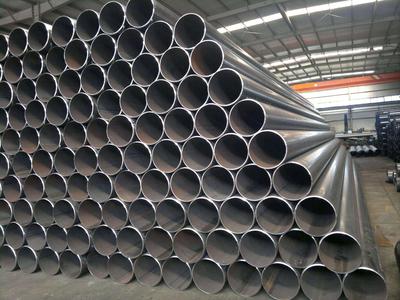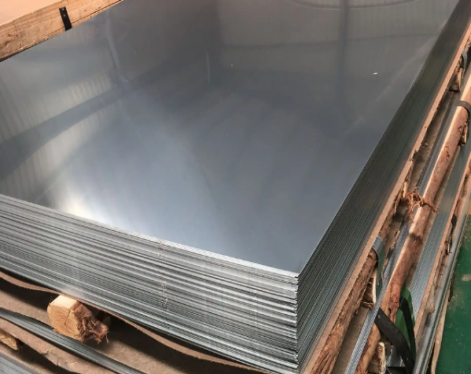Stainless steel seamless pipe is a hollow long cylindrical steel, and its scope of application is used as a pipe for conveying fluid. Mainly widely used in petroleum, chemical, medical, food, light industry, mechanical instruments and other industrial pipelines and mechanical structural components. The stainless steel pipe is made of acid-resistant and heat-resistant steel billets, which are heated, pierced, sized, hot-rolled, and cut.
Analysis of stainless steel seamless pipe at low temperature
1. Low temperature embrittlement --- In a low temperature environment, the deformation energy is small. In a low temperature environment, the phenomenon of reduced elongation and reduction of area is called low temperature embrittlement. It is mostly produced on the body-centered cubic structure of the ferrite series.
2. Low temperature processing --- Quenching the martensitic series stainless steel from the austenitizing temperature and then cooling it to an extremely low temperature to promote the quenching method of producing martensite. Suitable for stainless steels that easily produce retained austenite.

At low temperatures, stainless steel seamless pipes will have great changes in resistance, linear expansion coefficient, thermal conductivity, mass thermal fusion and magnetic properties. Resistance and coefficient of linear expansion become smaller at low temperatures. Thermal conductivity and mass heat capacity decrease sharply at low temperatures. Young's modulus (modulus of longitudinal elasticity) increases as the temperature decreases. Because the austenitic series stainless steel pipe has a low-temperature Ms point (martensitic transformation start temperature or martensite formation temperature), martensite can be formed when it is kept below the Ms point. The formation of martensite at low temperature makes SUS304 (18Cr-8Ni), the representative steel grade of austenitic series stainless steel, non-magnetic at room temperature, but becomes magnetic at low temperature.
At low temperature, ferritic stainless steel has low temperature brittleness like carbon steel, but austenitic steel does not. Therefore, ferritic or martensitic stainless steels produce low-temperature embrittlement, while austenitic stainless steels or nickel-based alloys do not show low-temperature embrittlement. Ferritic stainless steel pipes such as SUS410 (13Cr) and SUS430 (18Cr) show a sharp drop in impact value at low temperatures. Therefore, it is necessary to pay special attention when using it at low temperature. As a method to improve the impact toughness of ferritic stainless steel, a high purification process can be considered. With the help of controlling C, N grade levels, when the embrittlement temperature is improved in the range of -50°C to -100°C, it is possible to use it for freezing-related projects.
Analysis of stainless steel seamless pipe at low temperature
1. Low temperature embrittlement --- In a low temperature environment, the deformation energy is small. In a low temperature environment, the phenomenon of reduced elongation and reduction of area is called low temperature embrittlement. It is mostly produced on the body-centered cubic structure of the ferrite series.
2. Low temperature processing --- Quenching the martensitic series stainless steel from the austenitizing temperature and then cooling it to an extremely low temperature to promote the quenching method of producing martensite. Suitable for stainless steels that easily produce retained austenite.

At low temperatures, stainless steel seamless pipes will have great changes in resistance, linear expansion coefficient, thermal conductivity, mass thermal fusion and magnetic properties. Resistance and coefficient of linear expansion become smaller at low temperatures. Thermal conductivity and mass heat capacity decrease sharply at low temperatures. Young's modulus (modulus of longitudinal elasticity) increases as the temperature decreases. Because the austenitic series stainless steel pipe has a low-temperature Ms point (martensitic transformation start temperature or martensite formation temperature), martensite can be formed when it is kept below the Ms point. The formation of martensite at low temperature makes SUS304 (18Cr-8Ni), the representative steel grade of austenitic series stainless steel, non-magnetic at room temperature, but becomes magnetic at low temperature.
At low temperature, ferritic stainless steel has low temperature brittleness like carbon steel, but austenitic steel does not. Therefore, ferritic or martensitic stainless steels produce low-temperature embrittlement, while austenitic stainless steels or nickel-based alloys do not show low-temperature embrittlement. Ferritic stainless steel pipes such as SUS410 (13Cr) and SUS430 (18Cr) show a sharp drop in impact value at low temperatures. Therefore, it is necessary to pay special attention when using it at low temperature. As a method to improve the impact toughness of ferritic stainless steel, a high purification process can be considered. With the help of controlling C, N grade levels, when the embrittlement temperature is improved in the range of -50°C to -100°C, it is possible to use it for freezing-related projects.









